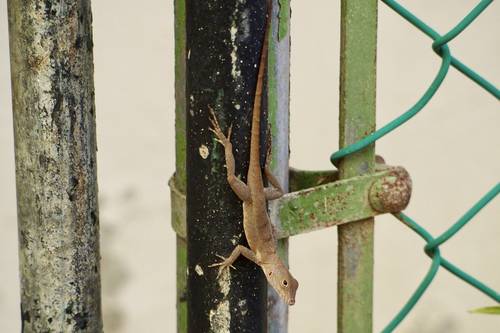Anolis cristatellus the lizard in Rincon, Puerto Rico.
Ap’s picture
Puerto Rico. According to researchers, a type of lizard that formerly lived in forests has genetically adapted to live in cities.
a cristatellus anolis The Puerto Rican lizard, a brown lizard with an orange throat, has developed longer limbs and unique scales that help it better adhere to smooth surfaces like windows and walls, according to the researchers.
According to Kristin Winchell, a biology professor at New York University and the study’s principal author, we are witnessing its evolution as it takes place. The research was published in the scholarly journal Proceedings of the National Academy of Sciences.
It’s critical to comprehend how creatures adapt as urbanization spreads throughout the globe so that cities can be planned to accommodate a variety of species, according to Winchell.
The genetic makeup of the forest lizards and those found in San Juan, the island’s capital, in the cities of Arecibo in the north and Mayagüez in the west were compared in the study, which examined 96 of those reptiles. The researchers discovered 33 genes in the lizard’s DNA that were connected to urbanization.
Harder evidence can be obtained, according to Wouter Halfwerk, a professor of evolutionary ecology at Amsterdam’s Vrije University who was not involved in the study.
Halfwerk was astounded that researchers could discover such convincing evidence of genetic adaptation: Finding evidence for heritable traits and their genetic makeup is the main objective in the subject of genetic evolution.
Winchell noted that the genetic level seems to reflect the morphological variations between the lizards.
We could even be able to forecast how the population would react to urbanization by merely looking at genetic features if urban populations are evolving together with similar physical and genomic changes.
declared the specialist.
These reptiles, which are on average seven years old, can undergo rapid change over the course of 30 to 80 generations, which enables them to avoid predators and survive in populated regions, according to Winchell. They can race across a heated parking lot more quickly thanks to their longer limbs, and their scales enable them to cling to smoother surfaces than trees.
